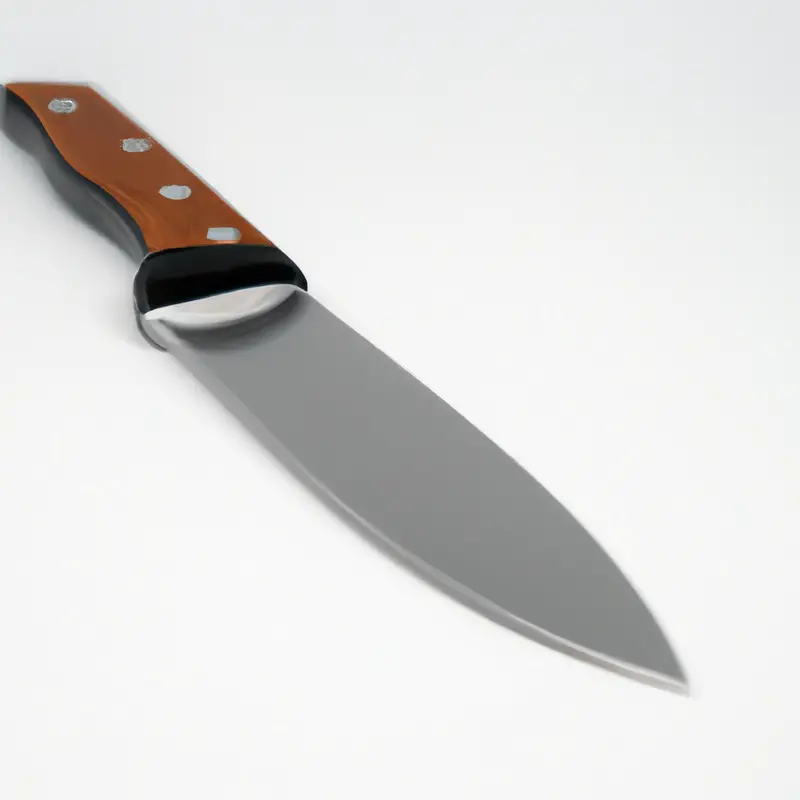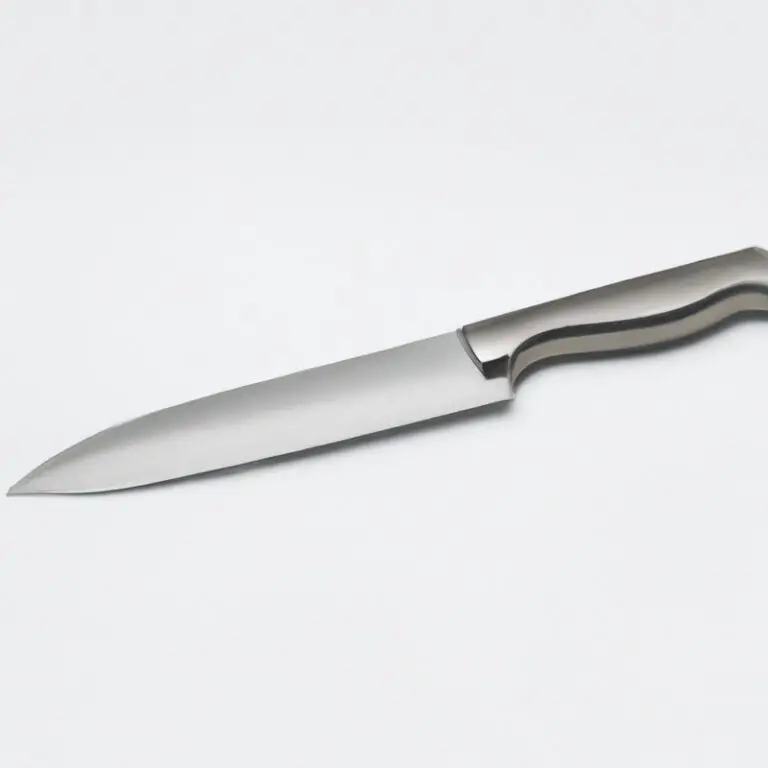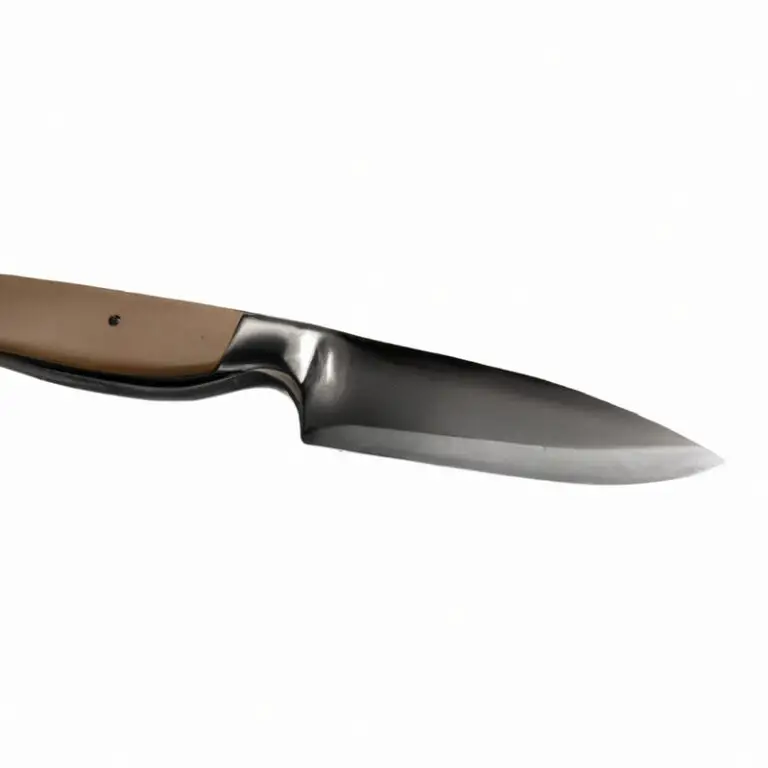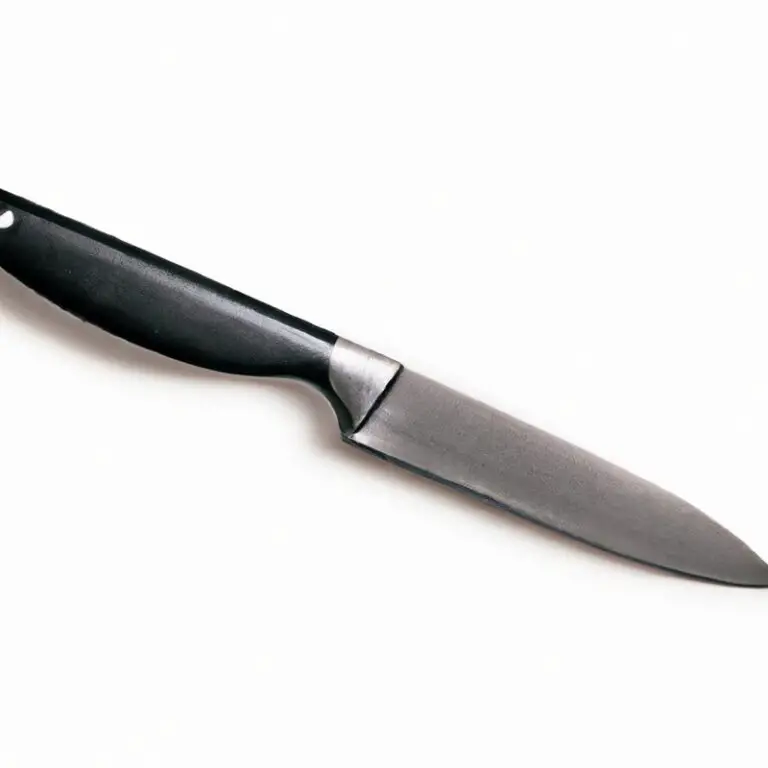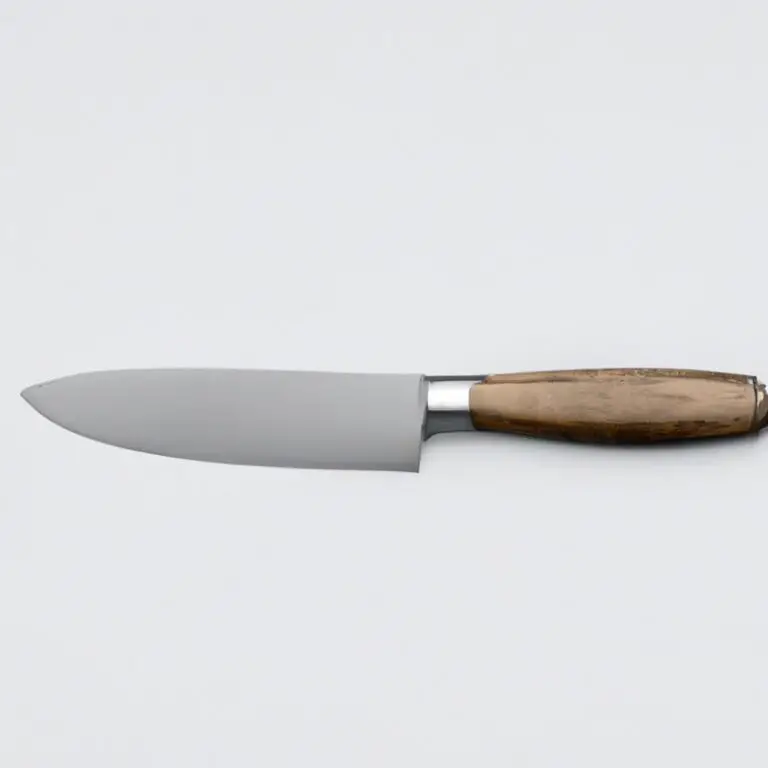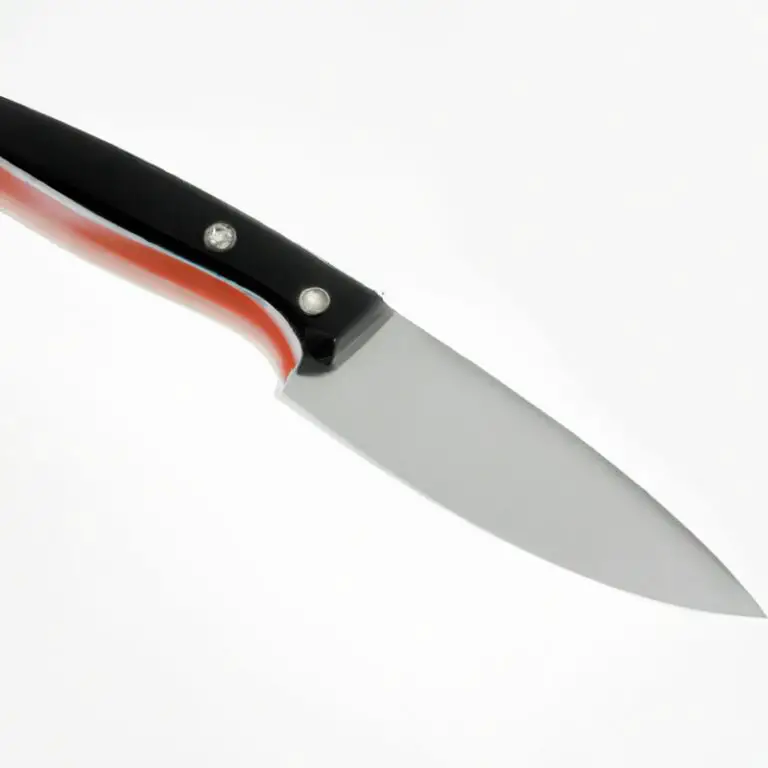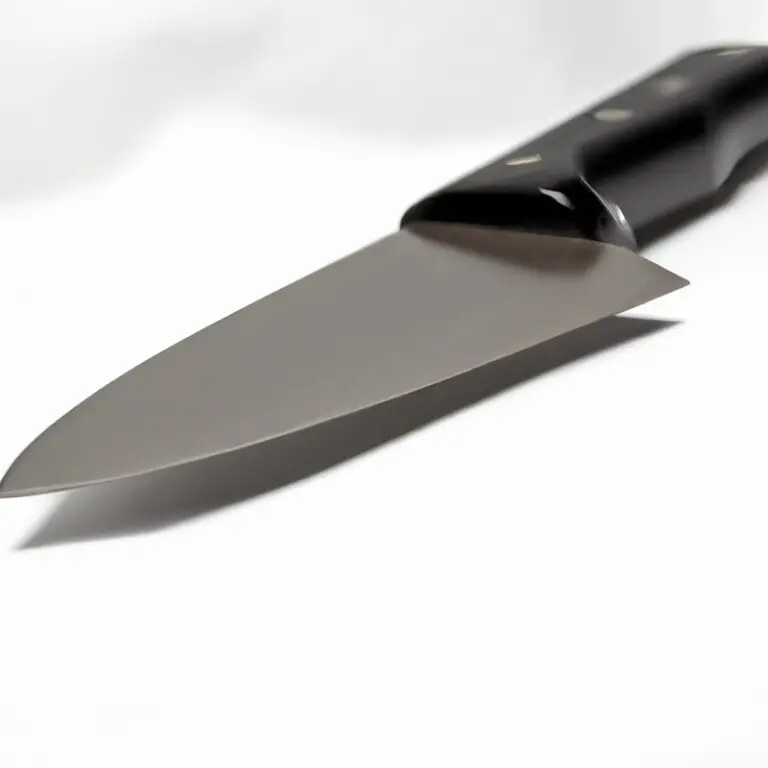What Materials Are Commonly Used To Make Paring Knife Blades? Explained
Key Takeaways:
- Paring knife blades can be made from a variety of materials, including carbon, stainless steel, ceramic, and titanium.
- The material used in the paring knife blade affects its durability, sharpness, and maintenance requirements.
- Carbon steel blades have excellent sharpness and edge retention but require regular maintenance to prevent rusting.
- Stainless steel blades are low maintenance and durable, but may not have the same level of sharpness as carbon steel blades.
Have you ever wondered what materials are used to craft the perfect paring knife blade? As a chef and knife enthusiast, I’ve spent countless hours researching and testing various blade materials to find the best options for my kitchen.
From high carbon stainless steel to laminated steel, there are numerous materials to choose from, each with its own unique advantages.
In this article, I will break down the most commonly used materials for paring knife blades, and share my personal experience and recommendations. So, whether you’re a professional chef or home cook, you’ll have all the information you need to choose the best paring knife for your needs.
High Carbon Stainless Steel
High Carbon Stainless Steel is a popular material used in paring knife blades. It is a type of steel that combines the toughness and edge retention of high-carbon steel with the corrosion resistance of stainless steel.
This makes it a durable and long-lasting option for kitchen knives.
High Carbon Stainless Steel is made by blending high amounts of carbon and stainless steel. The carbon content adds strength and hardness, while the stainless steel content provides corrosion resistance.
The addition of chromium and molybdenum also helps improve the steel’s resistance to rust and stains.
One of the benefits of High Carbon Stainless Steel is that it is easy to maintain. The stainless steel component helps prevent rust and corrosion, making it less likely to stain or discolor over time.
It is also less prone to chipping or breaking than high carbon steel alone.
In terms of sharpening, High Carbon Stainless Steel can hold a razor-sharp edge and is relatively easy to sharpen. It is also a versatile material that can be used in a variety of kitchen knives, including paring knives.
Overall, High Carbon Stainless Steel is a reliable and durable material that is commonly used in paring knife blades.
Its combination of durability, corrosion resistance, and edge retention makes it a great choice for those looking for a long-lasting and easy-to-maintain kitchen knife.
Damascus Steel
Damascus steel is a type of steel used in knife-making that originated from the Middle East. This type of steel is known for its unique pattern and sharp edge.
Damascus steel is made by welding or forging together two or more different types of steel and then repeatedly folding, twisting, and hammering the metal to create the signature pattern.
This process not only enhances the aesthetic appeal of the blade but also helps to increase its strength and durability. The carbon content in Damascus steel is also responsible for its ability to hold a sharp edge.
While Damascus steel can be pricey, it is a high-quality option for those looking for a unique and durable paring knife blade.
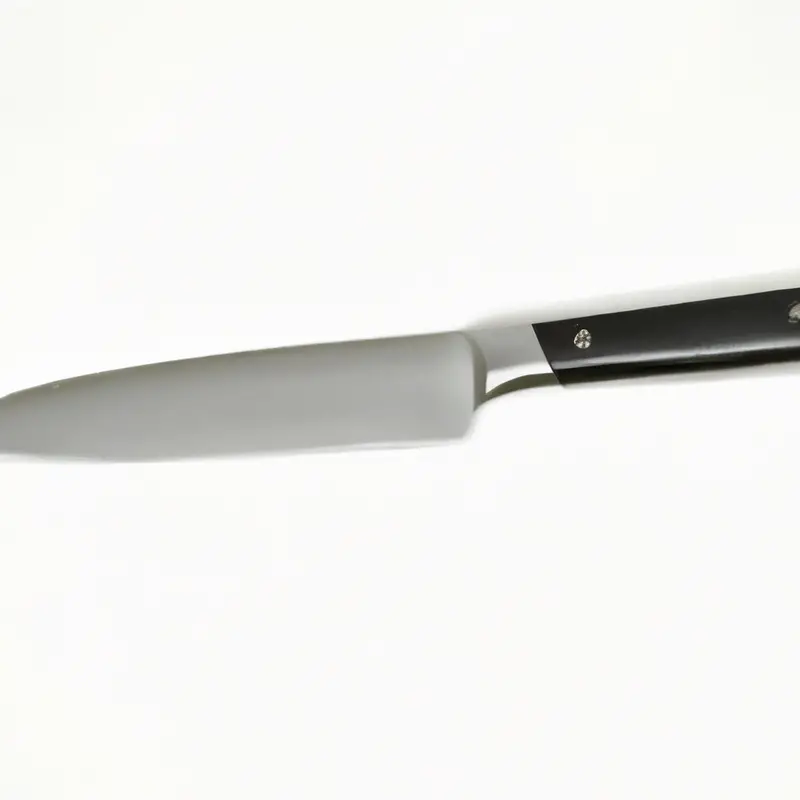
Ceramic
Ceramic paring knife blades are made from a high-tech material that’s lightweight, razor-sharp, and resistant to rust and corrosion. They are made by sintering zirconia powder at high temperatures to produce a blade that is second only to diamond in hardness.
Ceramic blades hold their edge exceptionally well and require little maintenance.
They are also non-reactive, which means they won’t affect the taste or appearance of food. However, they are brittle and can chip or break if dropped or mishandled.
Ceramics knives are perfect for cutting through fruits and vegetables.
They are not recommended for use on harder foods, such as frozen or bone-in meats.
High Carbon Steel
High carbon steel is a popular material used to make paring knife blades. It contains a higher percentage of carbon than regular stainless steel, which gives it greater strength, durability, and sharpness retention.
High carbon steel is also easier to sharpen and holds a sharper edge for longer periods.
However, high carbon steel is prone to rusting and corrosion if not properly cared for. It requires regular maintenance and cleaning, and should always be dried thoroughly after use.
To prevent rust, it is recommended to oil the blade occasionally and store it in a dry place.
When choosing a high carbon steel paring knife, it is important to look for one that is made from a quality steel such as 1095, which has a high carbon content and is known for its hardness and edge retention. Some high carbon steel blades may also include other elements like vanadium or chromium to enhance their properties.
In summary, high carbon steel is a great choice for paring knife blades due to its exceptional sharpness and durability.
However, it requires extra care to prevent rust and corrosion.
Stainless Steel
Stainless steel is a popular choice for paring knife blades due to its excellent corrosion resistance and durability. It is an alloy of iron, carbon, and at least 10.5% chromium, which forms a protective layer on the surface and prevents rusting.
There are different grades of stainless steel available, each with varying levels of hardness, toughness, and edge retention.
The most common grades used for knife blades are 440A, 440B and 440C, which are affordable and easy to sharpen. Other grades, such as VG10 and S30V, are premium options with higher performance characteristics.
Stainless steel blades are also easy to maintain, as they do not require frequent oiling or sharpening.
They are dishwasher safe and resistant to stains and rust. However, stainless steel blades have some drawbacks.
They may not hold an edge as well as higher-end steels, and the softer ones can be prone to chipping.
Additionally, some users may not like the feel of a stainless steel blade due to its lack of “bite” compared to high carbon steels. Overall, stainless steel is a great choice for those looking for a lower maintenance option with excellent corrosion resistance.
It is an affordable and practical material that can serve well for everyday kitchen tasks.
Carbon Steel
Carbon steel is a popular choice for paring knife blades because of its durability, sharpness, and ease of sharpening. This type of steel has a high carbon content, which makes it hard, strong, and resistant to corrosion.
Carbon steel blades can maintain a sharp edge for a longer time than stainless steel blades, but they require more maintenance to prevent rust and tarnishing.
Experts recommend using carbon steel paring knives for slicing and peeling fruits and vegetables, but they caution against using them on acidic or alkaline foods, which can react with the metal. Overall, carbon steel is a reliable material for paring knife blades that provides excellent performance and value for home and professional use.
Titanium
Titanium is a lightweight, strong, and durable material commonly used in the aerospace, medical, and automotive industries. As a knife blade material, titanium offers excellent corrosion resistance and does not rust or tarnish.
It is also non-magnetic and non-toxic, making it safe for food preparation.
Titanium can be challenging to sharpen, and it does not hold an edge as well as other materials like high carbon stainless steel or Damascus steel. However, titanium has its place in the kitchen for certain tasks and can provide a unique cutting experience.
Some paring knives feature titanium-coated blades, which involves applying a layer of titanium to the surface of the blade.
This coating can enhance the knife’s durability and corrosion resistance, but it may also add to the cost. Overall, titanium is a viable option for a paring knife blade, especially for those seeking a lightweight and corrosion-resistant option.
VG-10 Steel
VG-10 Steel is a high-quality Japanese stainless steel commonly used in the production of paring knife blades. It is a premium-grade steel that is highly durable, corrosion-resistant, and has excellent edge retention.
The VG-10 Steel is made by laminating high-quality steel with softer iron, which is then folded and forged into a blade.
VG-10 Steel is known for its outstanding hardness, which means it can be sharpened to an extremely sharp edge and hold that edge for a long time. Its unique composition of vanadium, chromium, and molybdenum contributes to its superior performance, making it one of the most popular knife blade materials among professional chefs.
If you want a paring knife that is sharp, durable, and rust-resistant, VG-10 Steel is an excellent choice.
Cobalt Alloy Steel
Cobalt alloy steel is a premium material used in the production of paring knife blades due to its high durability, corrosion resistance, and edge retention. The presence of cobalt in the stainless steel alloy enhances the blade’s toughness and hardness, making it resistant to chipping and breaking.
The cobalt also increases the steel’s strength and wear resistance, resulting in a sharp cutting edge that lasts longer than other materials.
Furthermore, cobalt alloy steel is also non-reactive to food, making it a hygienic choice for kitchen knives. This material can withstand high temperatures and is easy to maintain, ensuring that the blade retains its sharpness even with frequent use.
Cobalt alloy steel is widely used in the production of high-end paring knives, and it is considered a top-tier material in the industry.
Its benefits come with a higher price point, but the durability and longevity of the blade make it a worthwhile investment for serious home cooks and professional chefs alike.
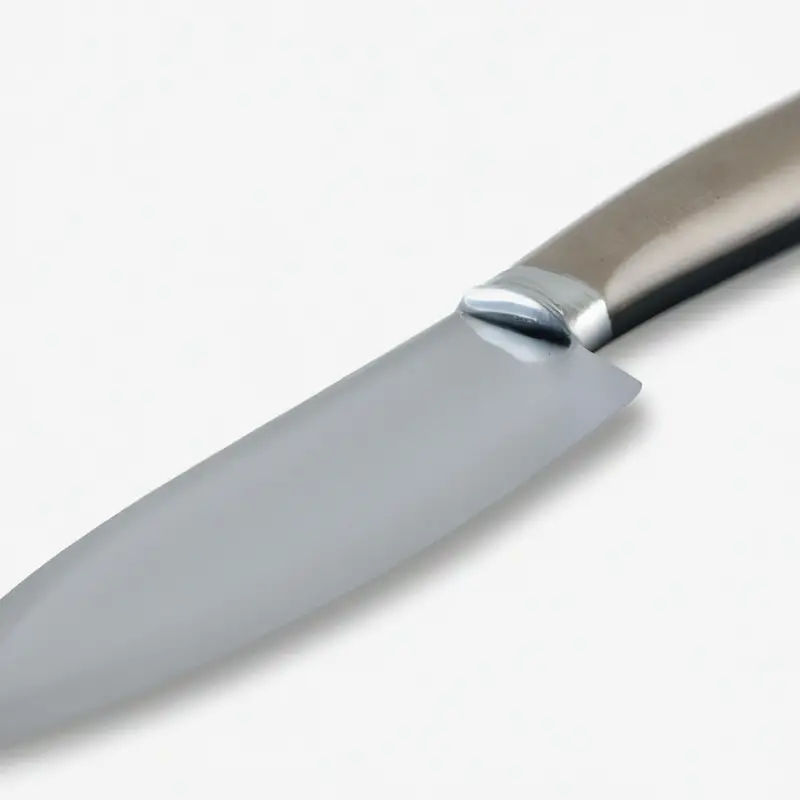
Laminated Steel
Laminated steel is a composite material made by layering different types of steel together. The outer layers of the steel are typically made from high-quality, corrosion-resistant stainless steel, while the inner layer is made from a high-carbon steel that can be sharpened to an extremely fine edge.
The result is a blade that combines the best properties of both types of steel, with excellent edge retention and corrosion resistance.
Laminated steel is commonly used in Japanese knife-making traditions, where it is known as “san mai” or “three-layer steel.” In this process, the inner layer of high-carbon steel is sandwiched between two layers of softer, more flexible steel. The resulting blade has a hard, sharp edge that can be sharpened to a razor-like finish, but is also less prone to chipping or breaking.
One benefit of laminated steel is its ability to make a strong and durable blade without sacrificing flexibility.
By combining layers of different steels, the blade can be designed to have a hard, sharp edge, while still allowing for some degree of flexibility to prevent it from breaking under stress. Some popular types of laminated steel used in knife-making include VG-10 steel, often used in Japanese-style knives, and 3G steel, a combination of three different types of steel that offers exceptional edge retention and corrosion resistance.
Overall, laminated steel is a reliable choice for knife-making due to its unique properties and ability to combine the best features of multiple types of steel.
Powdered Steel
Powdered steel, also known as particle metallurgy steel, is a type of high-performance steel that is created using advanced powder metallurgy techniques. This process involves blending fine metallic powders, pressing them into a solid mass, and then sintering them at high temperatures.
One of the main advantages of using powdered steel for paring knife blades is its exceptional edge retention.
It is made up of very small and uniform carbides that create a dense structure that enhances the blade’s sharpness and edge holding ability. Additionally, powdered steel has a finer grain structure, which makes it less prone to chipping or cracking.
Another benefit of powdered steel is its increased resistance to corrosion and wear.
This is because the steel alloy used in powdered steel has a higher ratio of alloying elements than other types of steel. This makes it more durable in harsh environments or when dealing with acidic foods that can corrode other types of knives.
However, it’s important to note that powdered steel may require more care than other types of steel.
It can be brittle and susceptible to breaking if not maintained properly. It’s also important to note that powdered steel can be more expensive than other types of steel.
Overall, powdered steel is an excellent choice for paring knife blades due to its outstanding edge retention, resistance to corrosion, and wear resistance.
Nitrogen Steel
Nitrogen Steel is a type of high-performance steel that contains nitrogen in addition to carbon and chromium. The use of nitrogen in steel production enhances the hardness, corrosion resistance, and toughness of the final product, making it an ideal option for knife blades.
This steel type is known for its ability to hold a sharp edge for extended periods, making it a popular choice for paring knives.
It is more durable than conventional stainless steel, reducing the likelihood of chipping or breaking during rigorous use. Additionally, nitrogen steel is easy to maintain, and it doesn’t require frequent sharpening.
Its high hardness and corrosion resistance also make it an excellent choice for outdoor knives.
In summary, nitrogen steel is a high-performance steel type commonly used for paring knife blades. Its exceptional durability, corrosion resistance, and ability to hold a sharp edge make it a popular choice among professional chefs and outdoor enthusiasts alike.
Blue Steel
Blue Steel is a type of high carbon steel that is commonly used in the production of paring knife blades. It is often referred to as “Blue” because of the blue-black color that appears on the surface of the metal during the hardening process.
This color comes from the heat treatment process the steel undergoes, which involves heating the metal to a very high temperature and then cooling it quickly in a liquid such as water or oil.
Blue Steel is known for its edge retention and durability, making it a popular choice for knife blades. However, it can also be more difficult to work with than other types of steel due to its high carbon content.
It requires special care and attention during the heat treatment process to ensure that the blade achieves optimal hardness and toughness.
Overall, Blue Steel is a high-quality, reliable, and long-lasting material for paring knife blades. It is frequently used by professional chefs and home cooks alike who demand the best performance from their knives.
If you are in the market for a paring knife, consider one made from Blue Steel for a high-performing and reliable blade.
Molybdenum Vanadium Steel
Molybdenum Vanadium Steel is a popular material for making high-quality paring knife blades. It is a combination of molybdenum and vanadium added to high carbon stainless steel, enhancing the corrosion-resistant and wear-resistant properties of the blade.
This material is also heat treated, increasing hardness and ensuring durability in use.
Molybdenum Vanadium Steel is known for its sharpness and ability to hold an edge longer than other materials. It is a preferred choice among professional chefs and home cooks who value precision and efficiency in their kitchen tasks.
AUS-10 Steel
AUS-10 Steel is a high-quality Japanese stainless steel that is commonly used to create paring knife blades. It has a composition of 0.95-1.10% carbon, 0.70-0.90% manganese, 0.50% silicon, 14.00-15.00% chromium, and 0.10-0.25% vanadium.
AUS-10 is a type of steel that is known for its excellent corrosion resistance, durability, and ability to hold a sharp edge.
It is easy to sharpen and can be honed to a razor-sharp edge, making it a popular choice for chefs and home cooks alike. AUS-10 Steel is often used in combination with Damascus or layered steel to create beautiful and functional blades that are both strong and aesthetically pleasing.
Overall, AUS-10 Steel is an excellent choice for paring knife blades due to its durability, sharpness, and resistance to corrosion.
Zirconium Oxide
Zirconium Oxide, also known as ceramic, is a popular material used for making paring knife blades. It is a high-performance material that is corrosion-resistant, incredibly hard and durable, and does not require frequent sharpening.
The unique properties of Zirconium Oxide make it ideal for slicing through fruits, vegetables, and other everyday kitchen tasks.
The hardness of the material ensures that the blade is sharp for an extended period, making it an excellent choice for home cooks and professionals who require a reliable cutting tool. However, Zirconium Oxide knives are thin and brittle, making them vulnerable to chipping if subjected to high lateral force.
It’s essential to use a Zirconium Oxide knife only for its intended purpose and avoid twisting or prying the blade to prevent accidental damage.
Zirconium Oxide is an excellent material for paring knife blades, providing excellent sharpness, hardness, and durability. While it may require extra care and attention when handling, it can greatly enhance the efficiency of kitchen tasks.
San Mai Steel
San Mai Steel is a traditional Japanese technique that involves bonding a hard, high-carbon steel with softer, low-carbon steel. The result is a blade that is both durable and flexible, with a sharp edge that holds up well over time.
The high-carbon steel at the core of the blade is known for its ability to hold a sharp edge, while the low-carbon steel surrounding it adds strength and resilience to the blade.
San Mai Steel is a popular choice for any type of knife, including paring knives, because it combines the best of both worlds – the hardness of high-carbon steel and the strength of low-carbon steel. This technique is often used in handcrafted knives, where the craftsmanship and quality of the materials are of utmost importance.
154 CM Steel
- CM steel is a high-quality steel commonly used in the production of paring knife blades. It is a special kind of stainless steel that contains a relatively high percentage of carbon, which makes it durable and tough. The steel is created using Crucible Industries’ Particle Metallurgy process, which involves combining melted steel with atomized powder to create a homogenous metal. The resulting steel is similar to ATS-34 steel and shares many of the same characteristics, including excellent edge retention, corrosion resistance, and hardness.
- CM steel is relatively easy to sharpen and maintains its edge well, making it a popular choice for high-performance knife blades. Its exceptional wear resistance also makes it ideal for heavy use and tough cutting tasks. The steel is also resistant to rust and staining, which makes it a great choice for kitchen knives that are often exposed to moisture and acidic substances.
Overall, 154 CM steel is an excellent choice for those looking for a high-quality, durable, and easy-to-maintain paring knife blade. Its combination of toughness, edge retention, and corrosion resistance make it a popular choice among knife makers and knife enthusiasts alike.
Inox Steel
Inox Steel, also known as stainless steel, is a popular material used to make paring knife blades. It is a low-carbon steel that contains at least 10.5% chromium, which makes it resistant to rust and corrosion.
Chromium also gives the steel its shiny appearance.
Inox Steel is easy to maintain and does not require frequent sharpening. It is also durable and can withstand high temperatures without losing its shape or bending.
Inox Steel is commonly used in the food industry due to its non-reactive nature, which means it will not leach into food or affect the taste.
Inox Steel comes in various grades, with 18/10 and 18/8 being the most common for kitchen use. These grades contain 18% chromium and 8% or 10% nickel, which improves its strength and durability.
While Inox Steel is a reliable material for paring knife blades, it may not be the best option for heavy-duty tasks.
Its hardness can vary, so it is important to choose a grade that is appropriate for the desired use. Overall, Inox Steel is a popular choice for paring knife blades due to its low maintenance, durability, and non-reactive nature.
H1 Steel
H1 Steel is a type of stainless steel that was specifically developed for use in saltwater environments. It is a high-performance steel that is resistant to corrosion and can withstand exposure to saltwater, making it highly suitable for use in paring knife blades.
H1 steel is a particularly popular material in the fishing industry for its resistance to saltwater corrosion.
It is composed of about 0.15% nitrogen, which replaces some of the carbon typically found in steel. H1 steel also contains 13% chromium, which helps to increase its corrosion resistance.
Its unique composition gives H1 steel a non-magnetic property, which means it is also popular for use in equipment used in mines or locations where magnetic interference is present.
Additionally, H1 steel is easy to maintain and sharpen, making it a preferred material for high-end paring knives used in professional and domestic settings.
Final Verdict
The materials used in paring knife blades play a critical role in their overall performance and durability. The most common materials used are high carbon stainless steel, Damascus steel, ceramic, titanium, VG-10 steel, and others.
Choosing the right blade material is essential to ensure precise cutting, ease of maintenance, and longevity.
By understanding the properties and characteristics of these materials, you can make an informed decision to invest in a high-quality paring knife that will last for years to come. Remember, when it comes to kitchen knives, quality is key.
So, choose wisely and invest in the best you can afford.
With this knowledge, you will be able to choose the right material for your paring knife and confidently use it to create delicious meals.

